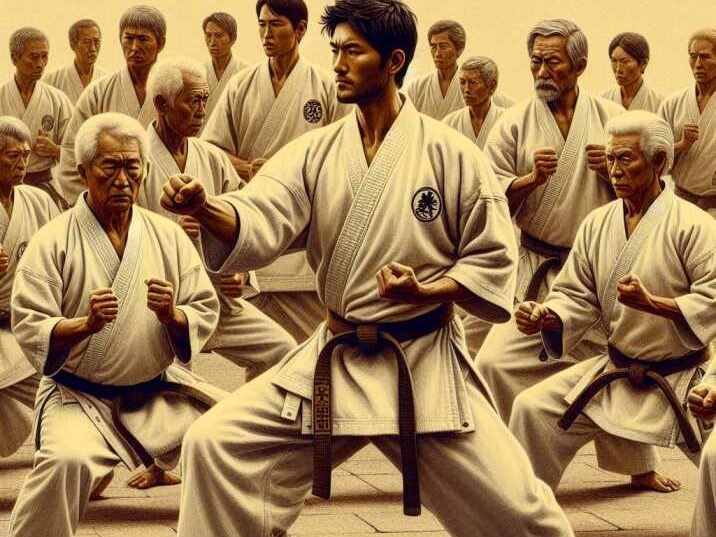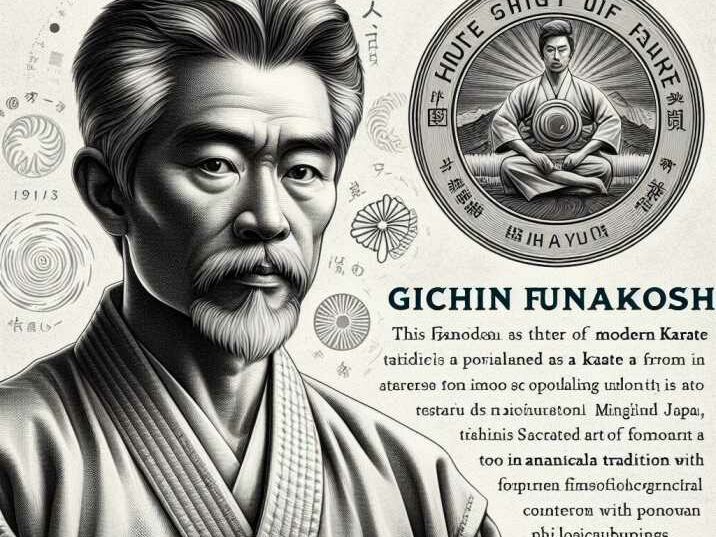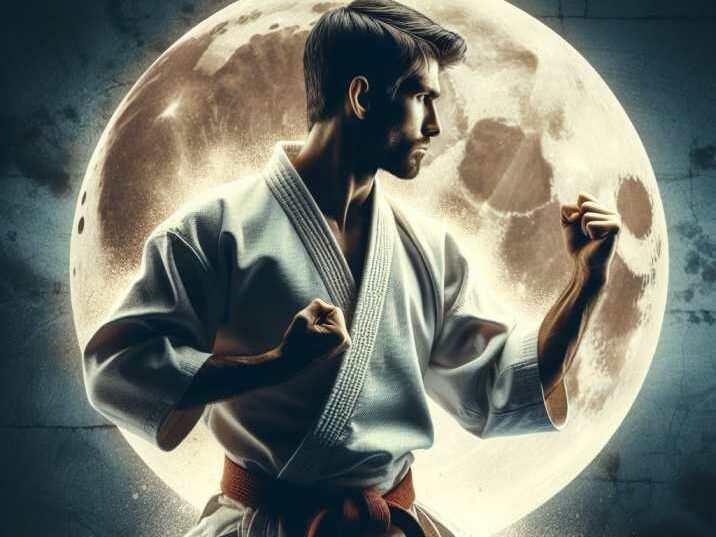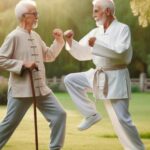Introduction:
Table of Contents
Karate, an art form that transcends mere physical combat, stands as a testament to the human spirit’s resilience, discipline, and pursuit of excellence. Rooted in ancient traditions and shaped by centuries of cultural exchange, Karate embodies a philosophy that extends far beyond the confines of the dojo. In this exploration of Karate’s origins and significance, we embark on a journey through time, tracing the evolution of this revered martial art from its humble beginnings to its global prominence today.
Origins of Karate:
The roots of Karate can be traced back to the island of Okinawa, Japan, where it evolved from a synthesis of indigenous Okinawan martial arts and Chinese martial arts influences. The term “Karate” itself translates to “empty hand” in Japanese, symbolizing its emphasis on unarmed combat techniques.

Historical Evolution of Karate:
Karate’s rich tapestry of history weaves together a narrative of cultural exchange, resilience, and adaptation, spanning centuries of evolution and transformation.
1. Origins in the Ryukyu Kingdom:
- Karate traces its origins to the Ryukyu Kingdom, present-day Okinawa, Japan, during the 14th century.
- The Ryukyu Islands maintained extensive trade relations with China, facilitating the exchange of martial arts knowledge and techniques.
2. Fusion of Indigenous and Chinese Martial Arts:
- Indigenous fighting methods of Okinawa merged with Chinese martial arts, laying the groundwork for what would become Karate.
- This fusion of styles gave rise to a unique system of unarmed combat characterized by fluid movements and effective self-defense techniques.
3. Development and Refinement:
- Over time, Karate underwent refinement and codification, with distinct styles and schools emerging across Okinawa.
- Key figures such as Sokon Matsumura and Anko Itosu played pivotal roles in systematizing Karate and disseminating its teachings.
4. Introduction to Mainland Japan:
- In the early 20th century, Karate gained prominence on mainland Japan through the efforts of pioneers like Gichin Funakoshi.
- Funakoshi, often regarded as the father of modern Karate, introduced the art to Japanese society, founding the Shotokan style.

5. Spread to the Global Stage:
- Following World War II, Karate experienced a surge in popularity, spurred by the efforts of Japanese instructors and international exposure.
- The establishment of Karate organizations and federations facilitated the global spread of the art, leading to its recognition as an Olympic sport.
6. Evolution in the Modern Era:
- In the modern era, Karate continues to evolve, with practitioners exploring new training methodologies and incorporating elements from other martial arts.
- While traditional styles like Shotokan and Goju-Ryu retain their authenticity, contemporary approaches such as sport Karate and mixed martial arts (MMA) have emerged.
7. Cultural Legacy and Global Impact:
- Karate’s journey transcends geographical boundaries, leaving an indelible mark on global culture and society.
- Through its emphasis on discipline, respect, and personal development, Karate serves as more than a martial art. it is a philosophy and way of life embraced by millions worldwide.
Development and Influence:
Pioneers of Karate’s Spread:
During the early 20th century, Karate experienced a transformative period marked by the efforts of visionary pioneers. Foremost among them was Gichin Funakoshi, whose tireless dedication and advocacy played a pivotal role in popularizing Karate on mainland Japan. Through his teachings and exemplary practice, Funakoshi elevated Karate from a regional tradition to a disciplined art form with profound philosophical underpinnings.
Recognition and Evolution:
As Karate gained traction on mainland Japan, it underwent a process of recognition and evolution. Funakoshi’s emphasis on discipline, respect, and personal development resonated deeply with Japanese society, garnering widespread acclaim for Karate as a martial art of substance and integrity. This period of recognition laid the groundwork for Karate’s evolution into a global phenomenon, with its influence transcending borders and captivating enthusiasts from all walks of life.
Global Reach and Cultural Impact:
Karate’s journey from Okinawa to the global stage is a testament to its enduring appeal and universal resonance. Through the efforts of dedicated practitioners, instructors, and organizations, Karate spread to diverse corners of the globe, leaving an indelible mark on countless lives. Its cultural impact extends beyond the realm of martial arts, permeating various facets of society and inspiring individuals to strive for excellence, discipline, and self-mastery.
Legacy and Enduring Relevance:
Today, Karate stands as a timeless testament to the power of human resilience, discipline, and aspiration. Its legacy endures not only in the hearts and minds of practitioners but also in the broader cultural landscape, where its principles of respect, perseverance, and personal growth continue to resonate. As we reflect on Karate’s development and influence, we recognize its profound significance as more than a martial art—it is a philosophy, a way of life, and a beacon of inspiration for generations to come.
Key Principles of Karate:
Karate embodies not only physical prowess but also a profound philosophy rooted in discipline, respect, and personal development. Delve into the fundamental principles that shape the essence of this ancient martial art:
1. Kata: The Embodiment of Technique and Tradition
- Definition: Kata refers to the intricate forms or patterns comprising a sequence of offensive and defensive movements.
- Significance: These choreographed routines serve as repositories of Karate techniques, allowing practitioners to refine their skills, develop muscle memory, and embody the essence of Karate’s heritage.
- Practice: Karateka diligently practice kata, striving for precision, fluidity, and spiritual connection with each movement.
2. Kihon: Mastering the Basics
- Definition: Kihon encompasses the fundamental techniques of Karate, including punches, kicks, blocks, and strikes.
- Importance: Mastery of kihon forms the foundation upon which all advanced techniques are built. Through repetitive practice, practitioners develop proper form, timing, and power.
- Training: Karateka dedicate themselves to honing their kihon, understanding that proficiency in the basics is essential for progress in more complex techniques.
3. Kumite: The Art of Controlled Combat
- Definition: Kumite refers to sparring sessions wherein practitioners engage in controlled combat scenarios, applying techniques learned in kata and kihon.
- Purpose: Kumite allows Karateka to test their skills, timing, and adaptability in a dynamic and interactive setting while fostering camaraderie and sportsmanship.
- Guidelines: Participants adhere to rules and regulations to ensure safety and mutual respect, emphasizing controlled strikes and effective defense techniques.
4. Etiquette: Honoring Tradition and Respect
- Description: Etiquette in Karate encompasses a code of conduct that reflects respect, humility, and reverence for the art, instructors, and fellow practitioners.
- Elements: This includes bowing as a sign of respect, addressing instructors and seniors with proper titles, and maintaining a disciplined demeanor both inside and outside the dojo.
- Importance: Upholding etiquette fosters a harmonious training environment, cultivates humility, and reinforces the traditional values integral to the Karate ethos.
5. Continuous Improvement: The Path of Mastery
- Philosophy: Karate instills a philosophy of lifelong learning and self-improvement, urging practitioners to pursue excellence and mastery relentlessly.
- Mindset: Karateka embrace challenges as opportunities for growth, setting goals, and striving to surpass their limitations through dedication, perseverance, and resilience.
- Legacy: The journey of continuous improvement in Karate transcends the physical realm, leaving a profound impact on the character and spirit of those who walk the path.
Popular Styles of Karate:
Karate, with its rich history and diverse influences, has given rise to several distinct styles, each with its unique characteristics and emphasis. Let’s explore some of the most prominent styles:
- Shotokan:
- Origins: Founded by Gichin Funakoshi, Shotokan is one of the most widely practiced styles of Karate worldwide. It emphasizes strong, linear movements and powerful strikes.
- Characteristics: Shotokan practitioners focus on kata (forms), kumite (sparring), and kihon (basic techniques). The style prioritizes speed, precision, and fluidity of movement.
- Training Methods: Training in Shotokan involves rigorous practice of basic techniques, stances, and kata, with an emphasis on developing physical strength and mental discipline.
- Goju-Ryu:
- Origins: Goju-Ryu, meaning “hard-soft style,” was founded by Chojun Miyagi. It combines elements of Chinese martial arts with indigenous Okinawan techniques.
- Characteristics: Goju-Ryu emphasizes close-range combat, utilizing circular blocks and strikes. It incorporates breathing exercises (kata) and strength training to develop internal power (ki).
- Training Methods: Practitioners of Goju-Ryu focus on kata bunkai (application of techniques), paired drills, and hojo undo (supplementary training) such as sanchin kata and makiwara training.
- Wado-Ryu:
- Origins: Wado-Ryu, founded by Hironori Otsuka, blends Karate with Jujutsu principles. It emphasizes evasion and redirection of attacks rather than direct confrontation.
- Characteristics: Wado-Ryu techniques involve fluid, flowing movements, with an emphasis on footwork and timing. The style incorporates throws, joint locks, and takedowns along with striking techniques.
- Training Methods: Wado-Ryu training includes kihon (basic techniques), kata, and kumite, with an emphasis on tai sabaki (body movement) and maai (distance control).
- Kyokushin:
- Origins: Kyokushin, founded by Masutatsu Oyama, is known for its emphasis on full-contact sparring and rigorous training. It is often regarded as one of the most challenging styles of Karate.
- Characteristics: Kyokushin practitioners focus on building physical endurance, toughness, and fighting spirit. The style emphasizes powerful, low kicks, strong punches, and close-range strikes.
- Training Methods: Kyokushin training includes heavy bag work, pad drills, and full-contact sparring (kumite). Practitioners also undergo intense physical conditioning, including push-ups, sit-ups, and running.

Each style of Karate offers its practitioners a unique journey of self-discovery, personal growth, and mastery. Whether you’re drawn to the precision of Shotokan, the fluidity of Goju-Ryu, the versatility of Wado-Ryu, or the challenge of Kyokushin, there’s a style of Karate to suit every individual’s preferences and goals.
Legacy and Global Impact:
Karate’s legacy resonates across continents, shaping cultures and inspiring individuals to strive for excellence. From traditional dojo settings to modern sports arenas, Karate continues to thrive as a symbol of discipline, respect, and perseverance. Its inclusion in international competitions such as the Olympics further underscores its global significance.
Table of Information Origins and History of Karate:
| Topic | Description |
|---|---|
| Origin | Traced back to Okinawa, Japan, with influences from China |
| Key Principles | Emphasizes self-discipline, respect, and continuous improvement |
| Global Impact | Spread to various countries, influencing cultures and sports |
| Notable Figures | Gichin Funakoshi, Masatoshi Nakayama, Chojun Miyagi |
| Training Components | Kata, Kihon, Kumite, Etiquette |
Conclusion:
In conclusion, The Fascinating Origins and History of Karate: Karate remains a timeless art form that continues to inspire and captivate people around the world. Its rich history, fundamental principles, and global influence serve as a testament to the enduring legacy of discipline, respect, and perseverance. As we honor the traditions of Karate and embrace its teachings, let us continue to uphold its values and pass them on to future generations.
FAQs about Karate:
Q. What is the origin of Karate?
Ans. Karate originated in Okinawa, Japan, blending indigenous Okinawan martial arts with Chinese influences.
Q. Who introduced Karate to mainland Japan?
Ans. Gichin Funakoshi, often referred to as the father of modern Karate, played a significant role in popularizing Karate on mainland Japan.
Q. What are the core principles of Karate?
Ans. The core principles of Karate include kata (forms), kihon (fundamental techniques), kumite (sparring), etiquette, and continuous improvement.
Q. How has Karate influenced popular culture?
Ans. Karate has left an indelible mark on popular culture through films, literature, and sports, shaping perceptions and inspiring generations of enthusiasts worldwide.
Q. What is the significance of Karate in today’s world?
Ans. Karate serves as a symbol of discipline, respect, and personal development, offering practitioners a path to physical fitness and spiritual growth.


